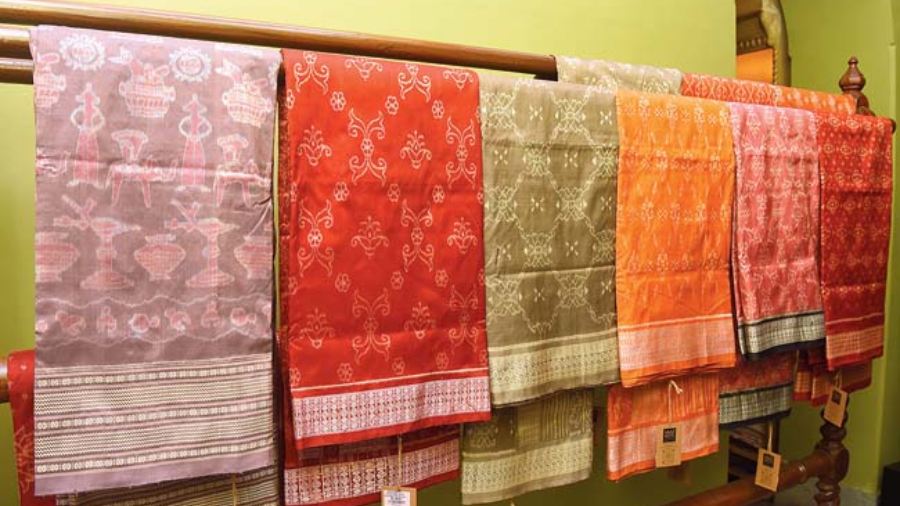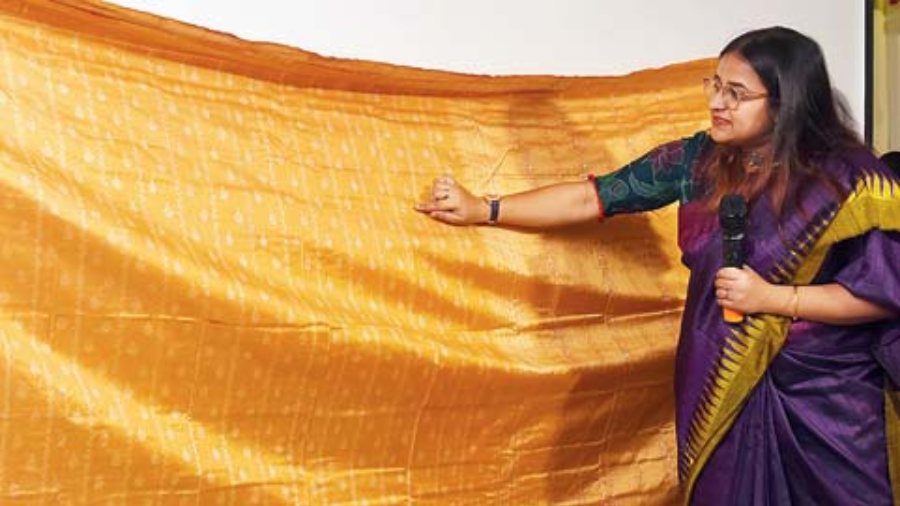Spinning Yarns, hosted by Byloom on August 28, was its first presentation of a series of talks and exhibitions on India’s 75th year of Independence. Bappaditya Biswas of Byloom began the talk session by sharing with guests the story of the brand’s inception and its endeavour to showcase and bring to the forefront handmade and elaborately constructed styles, which were traditionally relegated to the margins. The goal of the endeavour was also to create a dynamic environment and initiate a conversation worldwide about the stunning handicrafts coming out of India.
Anupriya Mridha, founder of Vani Vrtti, took over the session after the introductory speech. Vani Vrtti is a label specialising in Odisha’s handloom saris. Anupriya’s talk focused on the retailing aspect and the idea for creating one-of-a-kind pieces. She also presented colourful and instructive video about the process of making the saris. She discussed her experiences with natural dyes and how she draws inspiration from the world around her, including plants, animals, and even the sky and flowers.
She explained that the natural colours used in Vani Vrtti’s production come from various plant sources, including leaves, fruits, stems, and resins. Most saris coloured with natural pigments have haldi applied to them, a herb known for its skin-soothing benefits. The organic scents of the sari itself are a unique sensory experience. She listed several advantages of using natural colours, including their low toxicity, abundance from renewable sources, gentleness on the skin, and the little-know fact that they have higher UV absorption capacity.
The video presentations were insightful, with Anupriya’s explanation of the process right from sourcing of natural dyes to the pegging and drawing techniques she uses to create the ikat pieces she sells in her shop, including a parrot print widely considered to be among the best from her label. “Nature is my inspiration and a hand-operated loom is my canvas. Creating innovative textiles through uplifting a weaver’s skill and giving them a better livelihood is my immediate goal,” said Anupriya.

“Byloom has become synonymous with handloom excellence. Therefore it is wonderful to showcase the best of Odisha weaves through Vani Vrtti. Anupriya did an excellent job at presenting her story about tussore as well as the images she conjures through ikat. This was the first of the Spinning Yarns talks, we will have one more in our Puja countdown,” said Malavika Banerjee (Middle), partner, Byloom.

Silk saris made from vegetable dyes derived from leaves, flowers, fruits, stems, and roots. The natural dyes bring out an earthy yet eye-catching look of the saris. Rs 35,000 to Rs 50,000

The lotus and banana leaf sari had a novel curvilinear ikat pattern crafted by skilled artisans. It is dyed three times to bring out the patterns and achieve the intensely pigmented midnight cyan hue. Rs 43,800

This piece from the natural-dyed Prakritik collection is a mulberry silk sari where the fine curvilinear peepal lata design is obtained through the technique of bandha (ikat) of Sonepur, Odisha. It has been dyed in Phulbani district and the sari has anti-bacterial and antiseptic properties. Rs 38,500
Pictures: B. Halder
